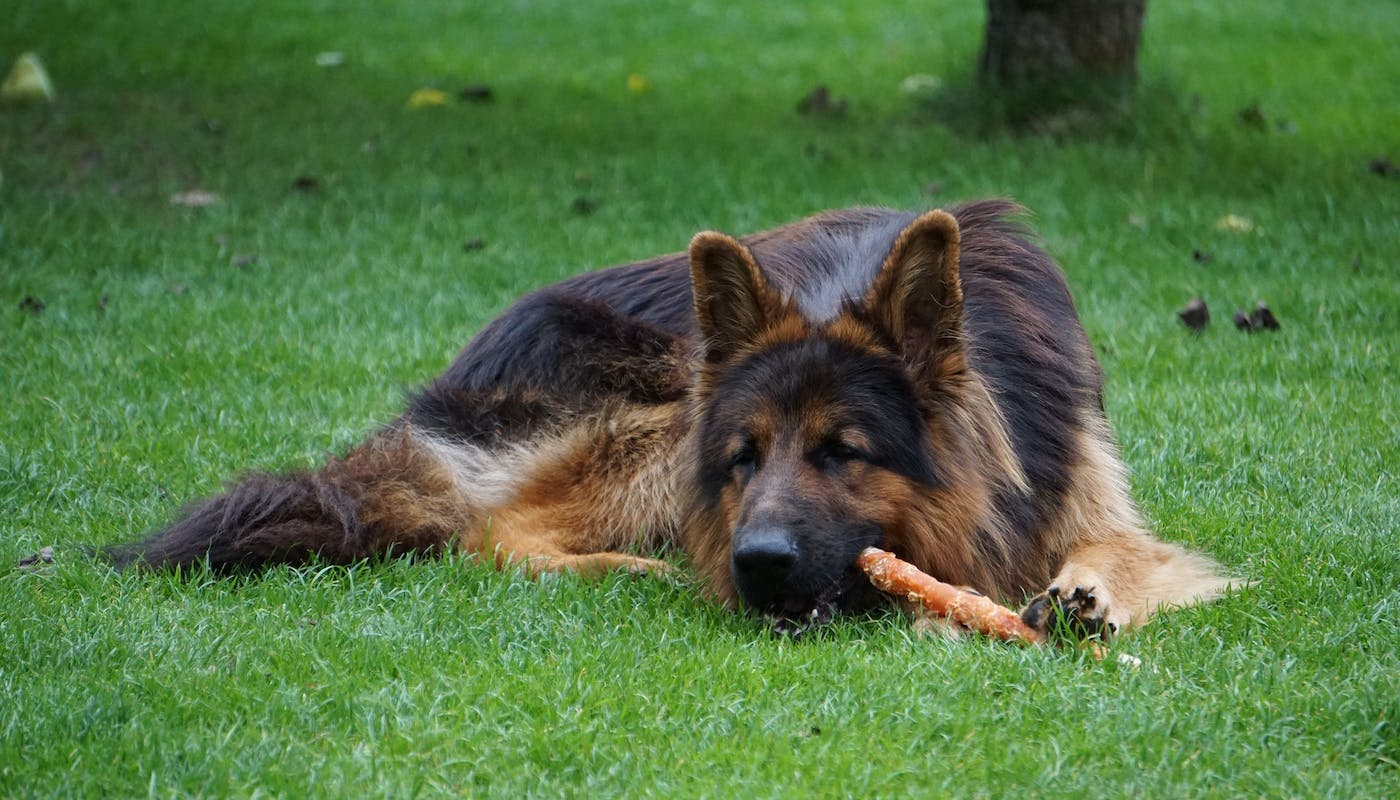Is Rawhide Bad for Dogs?
Some days you’ll find your dog chewing on a bin lid, plastic pen, or chair leg and wonder: why must they destroy all the things? Rawhide chews provide a simple solution. Dense, satisfying, and long-lasting, they’re ideal distractions to save your best furniture. BUT… is rawhide the safest option for dogs – and are there any better alternatives?
The Urge to Chew
Imagine being a domestic dog. You’re only permitted outdoors when your owner lets you out, your walks occur on someone else’s schedule, and some days… it rains. Only SOME household items are okay to chew, and you don’t always know which ones they are – especially when you get toys that look like shoes.
Life is full of inexplicable rules. So it’s no wonder that stress can build for dogs who are bored or energetic.
We support our dogs’ mental wellbeing by providing a routine and ensuring that they are conditioned to relax for part of the day. But, as well as exercise, dogs also require mental stimulation – and sometimes that means chewing/learn/dog-lifestyle/why-do-dogs-like-to-chew.
Chewing is a tool for relieving pain, boredom, and sometimes anxiety.
We know that puppies chew to relieve the pain of teething. While they’re young they also rely on their mouths to test and investigate new things – just like human toddlers, who can often be found chowing down on soil.
When they get older, chewing the furniture or other items is a source of entertainment. It can be a distraction from boredom, stress, or dental pain. An active dog who is looking for activity may turn to chewing when they want to burn energy.
How to Support a Chewing Dog
Ask yourself why the dog is chewing excessively. You might want to consider a range of toys and activities for a bored/learn/dog-lifestyle/do-dogs-get-bored or stressed dog. Introduce some brain-training toys/learn/dog-training/indoor-games-to-play-with-your-dog and treat-dispensers (such as the Kong range).
If you are worried about your best chair being destroyed, you can buy a natural anti-chew sprayhttps://doglab.com/anti-chew-spray/ which deters dogs from chewing it. And remember to offer some safe alternatives for your dog to chew when the need strikes. Which brings us to rawhide!
Is Rawhide Good for Dogs?
Firstly, note that rawhide is not suitable for puppies. There’s a greater risk of choking or blockages in the throat; softer chews will be more appropriate.
Rawhide (dried animal hide) is a natural product, with a chewy texture that means it will last for a while. However, production standards are not consistent; your rawhide could be made with bleach, artificial dyes, and worse. If you choose to buy rawhide, ensure it’s from a reputable manufacturer.
There are also health risks. Due to the tough texture of rawhide, large pieces can cause blockages inside a dog’s body and even, in some cases, require surgical removal. Animal hide isn’t digestible, so it should be spat rather than swallowed – something that dogs aren’t always good at!
Even though rawhide has been popular for many years, it’s no longer considered the ideal dog chew. If possible, we’d suggest trying an alternative first. Looking for ideas?
What Are the Alternatives to Rawhide Chews?
You can now buy lots of alternatives to rawhide. At FoTP we’ve been testing some of them on our hounds!
- Vegetarian and plant-based ‘rawhide’. These chews are made from vegetables – they come in colors like pea-green and beet-purple! They’re soft, fibrous, and quickly devoured.
- Dental chews. These aren’t natural – they’re designed with ingredients for dental health. They disappear quickly but they offer a bit of entertainment, as well as cleaner teeth.
- Antlers. These are tough and durable, but several vets and animal experts have raised concerns. Some antlers are so hard that they can cause dental fractures.
- Moon Bones and Bully Sticks. Fancy names for chews made from dried beef, which is digested more readily than rawhide – just ensure that you take the chews away when they become small, to prevent choking.
- Pig or Venison Ears. They’re low in fat and high in protein, as well as being digestible for dogs.
- DIY vegetable chews. Try freezing whole carrots or oven-drying sweet potato chunks. Vegetables are high in vitamins and fiber. They don’t last long, because the vegetable fibers break down quickly – but that’s an advantage if your dog tends to swallow large pieces.
- Chew toys – like nylon bones. It takes some trial and error to find a chew toy that your dog will keep chewing. Try one of the bone-shaped, easy-grip toys made from nylon or a ‘pretend stick’. These toys are designed to last for ages.
Dogs are Different!
Every dog is different. We’ve found that some love their toys, while others panic at the sound of a squeak. Some will chew persistently, while others prefer to be stimulated through attention or training. Our best advice is to get to know your dog, and try out a few different options to find the best chew for them.
If you’re worried your dog is chewing as a result of anxiety, consider a supplement like Harmony./products/harmony We’ve designed it with the help of lots of vets and scientists to help relieve stress and anxiety through natural, clinically proven ingredients.
